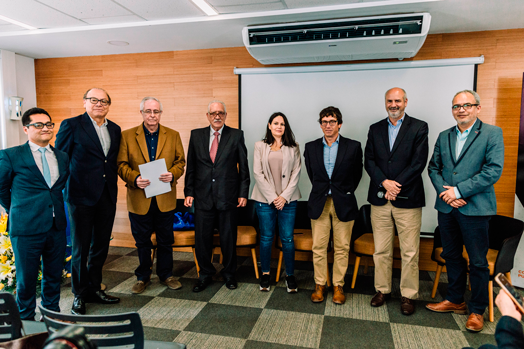
Introduction to Daniel Libelig
Daniel Libelig is a name powerfully associated with the world of architecture. Famous for his bold visions and daring designs, he has left his mark on skylines and broken many molds. One story or history is epitomized by every one of his buildings. He does not talk merely of buildings; he evokes feelings, sparks conversations on the space, on the memory it evokes, and also establishes the identity.
From cultural landmarks to urban developments, the portfolio of Libeskind displays a peerless integration of artistry and functionality. Each project births a rebellion against the status quo while urging us to rethink our relationship with the spaces we inhabit. Join us as we explore the story of this architect whose work continues to shape modern architecture today.
Early Life and Education
Daniel Libelig was born in 1946 in Łódź, Poland. His early years were marked by the shadows of World War II and its aftermath. The family migrated to Israel when he was a child, seeking refuge and new beginnings.
Growing up, Daniel Libelig developed an interest in art and design. He later moved to the United States for further studies. At Cooper Union in New York City, he honed his skills while immersing himself in diverse architectural philosophies.
His passion for architecture became evident during this time. He embraced unconventional ideas that challenged traditional norms. This foundation would shape his distinctive approach as a designer later on.
Rise to Fame: Iconic Projects
Daniel Libelig’s rise to fame is marked by his groundbreaking designs that challenge conventional architecture. His unique approach caught global attention with the Jewish Museum in Berlin, a poignant structure intertwining memory and space.
The museum’s zigzagging form speaks volumes about history and identity, becoming an essential part of the cityscape. It set the stage for his future projects.
Another landmark achievement is the master plan for Ground Zero in New York City. This project reflects resilience after tragedy, showcasing a delicate balance between remembrance and renewal.
Libeskind’s design for the Royal Ontario Museum also turned heads with its striking crystal-like façade. This bold statement transformed public perception of museums as mere repositories of artifacts.
Each iconic project illustrates his fearless exploration of architectural narratives, marking him not just as a builder but as a storyteller through space and light.
A Bold and Controversial Style
Daniel Libelig’s architectural style is a striking blend of boldness and controversy. His buildings often defy conventional aesthetics, challenging viewers to rethink their environments. Sharp angles, fragmented forms, and unexpected materials characterize his work.
Critics have called some designs radical, while others find them transformative. Each project becomes a conversation starter. For instance, the Jewish Museum in Berlin showcases jagged lines that evoke emotion and history simultaneously.
Libeskind’s fearless approach invites both admiration and skepticism. He pushes boundaries and embraces complexity in urban landscapes. This duality creates an engaging narrative around each structure he crafts.
His commitment to storytelling through architecture sets him apart from many contemporaries. Every building reflects deeper themes tied to memory, identity, or place—a testament to his vision as an architect who isn’t afraid to provoke thought with form.
Impact on the Architecture World
Daniel Libelig’s influence on architecture transcends his own projects. His innovative concepts challenge traditional norms and inspire a new generation of architects. By pushing boundaries, he encourages creatives to think outside the box.
His designs often evoke emotion and provoke thought. Buildings like the Jewish Museum in Berlin stand as testaments to history while inviting conversations about memory and identity. This approach has shifted how society perceives architectural spaces.
Libeskind’s work also emphasizes storytelling through design. He believes that every structure should narrate its purpose or significance, making his architecture deeply resonant with users.
As architects integrate technology into their practices, Libeskind remains at the forefront, blending digital tools with artistic vision. His advocacy for sustainable practices further highlights a commitment to environmental responsibility within modern architecture.
Through these contributions, Daniel Libelig has left an indelible mark on the architectural landscape, inspiring both critics and enthusiasts alike.
Beyond Buildings: Libeskind’s Other Ventures
Daniel Libelig’s creativity extends far beyond the realm of architecture. He is a multifaceted artist and designer, delving into various disciplines that reflect his bold vision. His work in design includes furniture, art installations, and even jewelry.
His collaborations often blur the lines between different forms of artistic expression. For instance, his designs for exhibitions showcase not just structures but immersive experiences that evoke emotional responses from visitors.
Libeskind also engages with music and theater. His fascination with narrative informs projects like stage sets, where spatial dynamics play a crucial role in storytelling.
Education remains close to his heart as well; he frequently lectures at prestigious institutions around the world. Through these engagements, he inspires the next generation of architects and artists to think outside conventional boundaries.
This versatility highlights Libeskind’s belief that architecture should be an integral part of a broader cultural dialogue.
Legacy and Future Projects
Daniel Libelig’s legacy is already cemented in the annals of modern architecture. His innovative approach continues to inspire a new generation of architects and designers who are drawn to his visionary ideas.
Looking ahead, Libeskind has several exciting projects on the horizon. Each one promises to challenge conventional design norms and push creative boundaries even further. His upcoming designs reflect a commitment to sustainability while addressing social issues through architectural spaces.
Libeskind’s work transcends mere structures; it invites dialogue and reflection within communities. He envisions buildings that resonate with their surroundings, creating harmony between nature and urban life.
As he embarks on these new ventures, his influence will likely extend beyond just physical forms. It opens doors for discussions about culture, identity, and the human experience in an ever-changing world.
Conclusion
Daniel Libelig’s journey as an architect has been inspirational, indeed; he has founded a revolution in architecture through his strong vision and innovative ideas. Born in Poland to a family of intelligentsia, he broke through each hurdle lying in his way, crossing boundaries to be one of the greatest figures in modern architecture. All his projects have transformed skylines and defined urban spaces.
Libeskind has his personal style, that provokes a lot of people with the strong kind of approach that goes against conventional understandings of design. That willingness to provoke thought makes him unique in the architectural community.
In addition to erecting the buildings he is part of art, education and a whole lot of culture building. Each such a story and experience portrayed relates to not only buildings but also stories on a higher plane of being.
As we look forward, Daniel Libelig continues to shape modern architecture and inspire future generations through these works and ideas that will be seen for many years to come.






